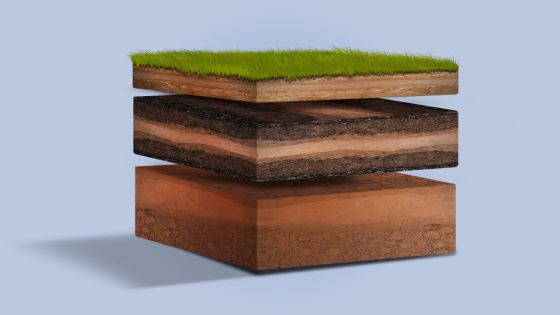Clay soil, while abundant and fertile, poses unique challenges when it comes to building foundations. The expansive nature of clay, characterized by changes in volume based on moisture content, can lead to foundation instability. This article explores the intricacies of clay soil foundations and provides insights into how to stabilize foundation on clay soil effectively.
Unraveling the Characteristics of Clay Soil
Expansive Nature:
- Understanding Clay’s Behavior:
- Clay soil has a high clay mineral content, which makes it prone to expansive behavior. It contracts during dry periods and expands when saturated with water. This cycle of expansion and contraction can exert significant pressure on foundations.
Moisture Sensitivity:
- Impact of Moisture Changes:
- Clay soil’s sensitivity to moisture changes is a key factor in foundation issues. Excessive moisture can lead to swelling, causing the soil to exert pressure on the foundation, while prolonged dry spells can result in soil shrinkage, leading to settlement and foundation movement.
Signs of Foundation Issues on Clay Soil
Foundation Cracks:
- Visible Structural Changes:
- Cracks in the foundation or interior walls are common signs of foundation issues. These cracks may appear due to the soil’s movement and the stress it places on the foundation.
Uneven Floors:
- Sloping or Uneven Surfaces:
- Uneven or sloping floors within a structure can indicate foundation movement. As the clay soil expands and contracts, it can create an uneven foundation, causing floors to tilt or settle unevenly.
Sticking Doors and Windows:
- Structural Shifts:
- Difficulty opening or closing doors and windows may be indicative of foundation problems. The shifts in the foundation can affect the alignment of doors and windows, leading to noticeable operational issues.
Stabilizing Foundations on Clay Soil
Site Evaluation:
- Understanding Soil Conditions:
- Conduct a thorough site evaluation to understand the specific characteristics of the clay soil. This includes assessing soil moisture levels, soil composition, and potential drainage issues.
Proper Drainage Solutions:
- Managing Water Around the Foundation:
- Addressing drainage is crucial for stabilizing foundations on clay soil. Implement proper grading to direct water away from the foundation, install gutters and downspouts, and consider using French drains to prevent excessive moisture accumulation.
Moisture Maintenance:
- Consistent Moisture Levels:
- Maintain consistent moisture levels in the soil around the foundation. This can be achieved through proper irrigation practices that prevent extreme fluctuations in soil moisture, helping to minimize expansive and contractive cycles.
Foundation Underpinning:
- Adding Structural Support:
- Foundation underpinning involves strengthening or extending the foundation to provide additional support. Methods such as helical piers push piers, or concrete piers can be employed to stabilize the foundation and counteract the effects of clay soil movement.
Root Barriers:
- Mitigating Tree Influence:
- Trees near the foundation can contribute to moisture variations in the soil. Installing root barriers can help control the influence of tree roots, reducing the potential for soil movement and foundation damage.
Moisture Barriers:
- Preventing Soil Moisture Infiltration:
- Installing moisture barriers, such as plastic sheeting, can help minimize the impact of moisture on clay soil. These barriers can be placed around the foundation to control moisture infiltration and reduce the soil’s expansion and contraction.
Pier and Beam Foundations:
- Adaptable Foundation Design:
- Consider opting for pier and beam foundations in areas with challenging clay soil. This design allows for more flexibility and can mitigate the impact of soil movement by elevating the structure above the ground.
Maintenance and Long-Term Considerations
Regular Inspections:
- Vigilance for Early Detection:
- Conduct regular inspections to identify any signs of foundation issues early on. Prompt detection allows for timely intervention, reducing the risk of extensive damage.
Professional Consultation:
- Seeking Expert Advice:
- Engage with foundation specialists or geotechnical engineers to assess the foundation and soil conditions professionally. Their expertise can provide tailored recommendations for stabilization measures based on the site’s specific characteristics.
Foundation Moisture Monitoring:
- Utilizing Technology:
- Invest in technology, such as soil moisture sensors, to monitor foundation moisture levels. This proactive approach allows for real-time adjustments to irrigation practices, ensuring optimal soil conditions.
Conclusion
Understanding the intricacies of clay soil and its impact on foundations is crucial for homeowners and builders alike. While clay soil presents challenges, implementing proactive measures and stabilization techniques can help mitigate the risks associated with soil movement. From proper drainage solutions to foundation underpinning, a combination of strategies tailored to the site’s unique characteristics can contribute to a stable and resilient foundation. By embracing these considerations, homeowners can navigate the challenges of clay soil and ensure their foundations’ longevity and structural integrity.

